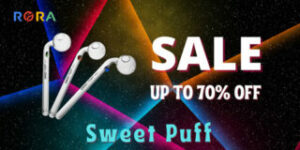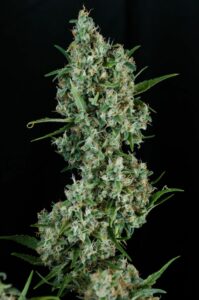Decarboxylation of Kief is a crucial step in unlocking the full potential of cannabinoids such as THC and CBD. By following the proper decarboxylation process, you can activate the medicinal benefits and psychoactive effects of Kief. In this article, we will explore the science behind decarboxylation and provide a step-by-step guide for decarboxylating Kief in the oven.
Key Takeaways
- Decarboxylation activates the cannabinoids in Kief, enabling the full range of medicinal benefits and psychoactive effects.
- Choosing the right temperature and time for decarboxylation is essential to preserve the potency of Kief.
- Even heating and careful monitoring during the decarboxylation process are critical for optimal results.
Decarboxylating Kief: The Science Behind It

Understanding the decarboxylation process
Decarboxylation is a critical step in activating the psychoactive properties of cannabinoids in cannabis. It involves the removal of a carboxyl group from cannabinoid acids, such as THCA and CBDA, to convert them into their activated chemical forms, THC and CBD. This process is essential for the interaction with the endocannabinoid system, delivering the high or therapeutic relief sought by cannabis consumers. When applying heat to cannabis flower through smoking, vaporizing, or cooking, the decarboxylation process is initiated, resulting in the activation of cannabinoids. The decarboxylation process works in various ways, primarily through heat application.
Choosing the right temperature and time
When decarboxylating kief in your oven, precision is key. You’ll want to maintain a consistent temperature to ensure the THCA in the kief is converted into THC without degrading the product. An oven thermometer can be invaluable for this purpose, as it provides accurate readings and helps prevent overheating. The ideal temperature for decarboxylation is typically around 220-245 degrees Fahrenheit (104-118 degrees Celsius), and the process usually takes about 30-40 minutes. However, these parameters can vary depending on the specific properties of the kief you’re using.
It’s important to note that the decarboxylation process is a function of both heat and time. Overheating can lead to a loss of potency and an undesirable burnt flavor, while underheating may result in an incomplete conversion of cannabinoids. Here’s a simple guide to help you find the right balance:
- Preheat your oven to the desired temperature.
- Spread the kief evenly on a parchment paper-lined baking sheet.
- Place the baking sheet in the oven once it has reached the correct temperature.
- Allow the kief to heat for the recommended duration, checking occasionally for a color change from bright green to golden brown.
Remember, patience and attention to detail are essential. By carefully managing the temperature and time, you’ll ensure the highest quality and potency for your decarboxylated kief.
Frequently Asked Questions
What is decarboxylation and why is it important for kief?
Decarboxylation is the process of activating cannabinoids such as THC and CBD in kief by heating it. This is important because it allows the cannabinoids to become psychoactive and provides the medicinal benefits of CBD.
What happens if the kief is overheated during decarboxylation?
Overheating kief during decarboxylation can lead to the destruction of terpenes and other active compounds, impacting the overall quality and effectiveness of the decarboxylated kief.
Can I skip the decarboxylation step when using kief for cooking?
Decarboxylation is essential for activating the cannabinoids in kief. If skipped, the psychoactive effects of THC and the medicinal benefits of CBD may not be fully realized, resulting in a less potent final product.
- SEO Powered Content & PR Distribution. Get Amplified Today.
- PlatoData.Network Vertical Generative Ai. Empower Yourself. Access Here.
- PlatoAiStream. Web3 Intelligence. Knowledge Amplified. Access Here.
- PlatoESG. Carbon, CleanTech, Energy, Environment, Solar, Waste Management. Access Here.
- PlatoHealth. Biotech and Clinical Trials Intelligence. Access Here.
- Source: https://greencamp.com/how-to-decarboxylate-kief-in-oven/
- :has
- :is
- :not
- a
- About
- accurate
- activate
- activated
- activating
- Activation
- active
- allows
- an
- and
- Application
- Applying
- ARE
- around
- article
- AS
- attention
- author
- baking
- Balance
- BE
- because
- become
- behind
- benefits
- both
- Bright
- brown
- by
- CAN
- Cannabinoid
- cannabis
- card
- careful
- carefully
- cbd
- Celsius
- change
- checking
- chemical
- color
- consistent
- Consumers
- content
- Conversion
- convert
- converted
- cooking
- correct
- critical
- crucial
- delivering
- Depending
- desired
- detail
- duration
- during
- effectiveness
- effects
- embedded
- enabling
- ensure
- essential
- evenly
- explore
- final
- Find
- flavor
- flower
- following
- For
- forms
- from
- full
- fully
- function
- Golden
- Green
- Greencamp
- Group
- guide
- happens
- help
- helps
- High
- highest
- How
- How To
- However
- http
- HTTPS
- i
- ideal
- if
- impacting
- important
- in
- initiated
- interaction
- into
- invaluable
- involves
- IT
- Key
- lead
- less
- LINK
- loss
- maintain
- managing
- May..
- medicinal
- minutes
- monitoring
- note
- of
- on
- once
- optimal
- or
- Other
- overall
- parameters
- Patience
- plato
- Plato Data Intelligence
- PlatoData
- potency
- potent
- potential
- Precision
- prevent
- primarily
- process
- Product
- proper
- properties
- provide
- provides
- purpose
- quality
- range
- reached
- realized
- recommended
- relief
- removal
- result
- resulting
- Results
- right
- ROW
- Science
- sheet
- Simple
- Smoking
- sought
- specific
- Step
- such
- system
- takes
- that
- THC
- The
- their
- Them
- Therapeutic
- These
- this
- Through
- time
- to
- typically
- unlocking
- using
- usually
- various
- vary
- want
- ways
- we
- when
- while
- why
- will
- with
- without
- works
- you
- Your
- youtube
- zephyrnet













